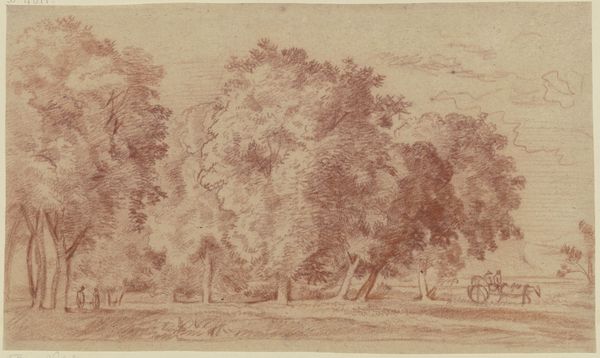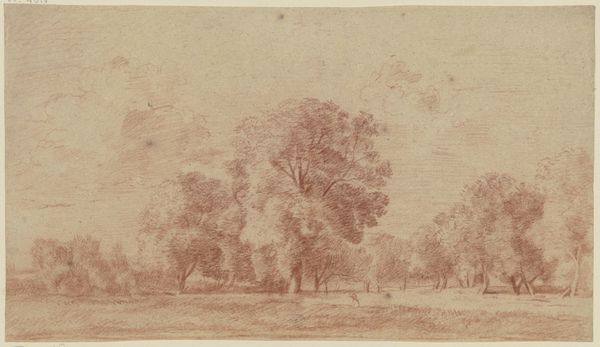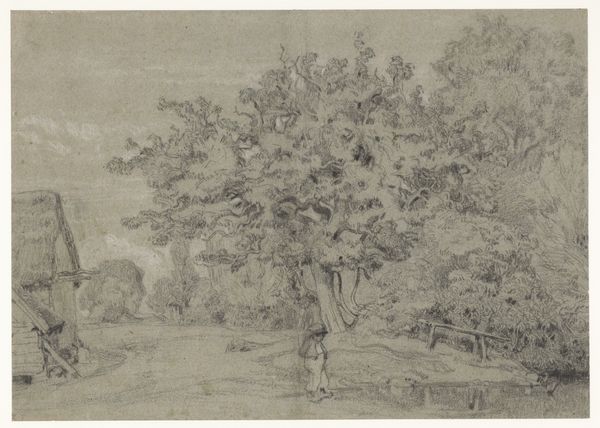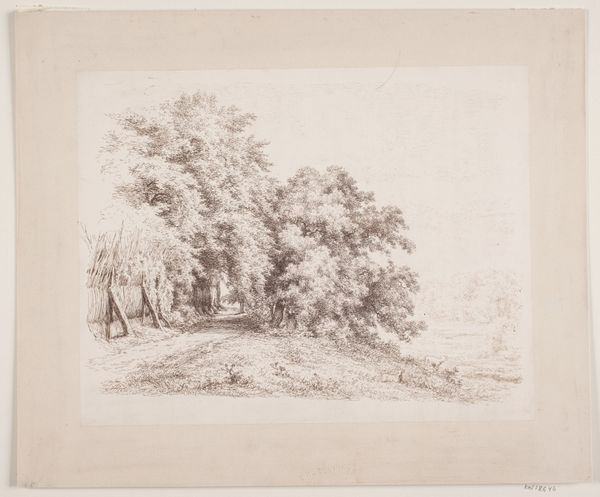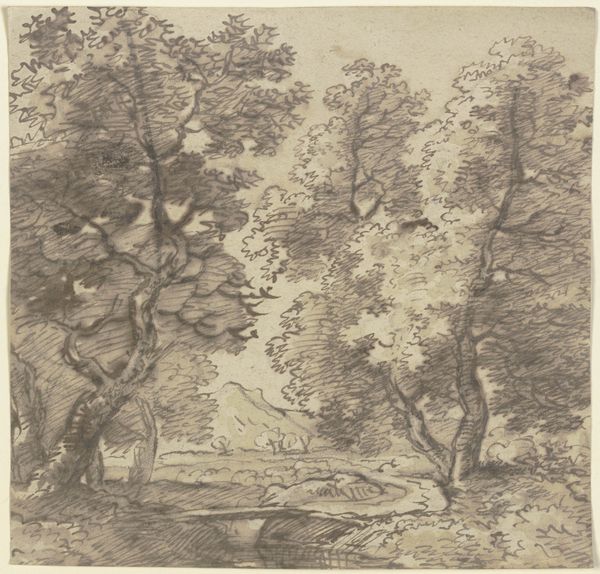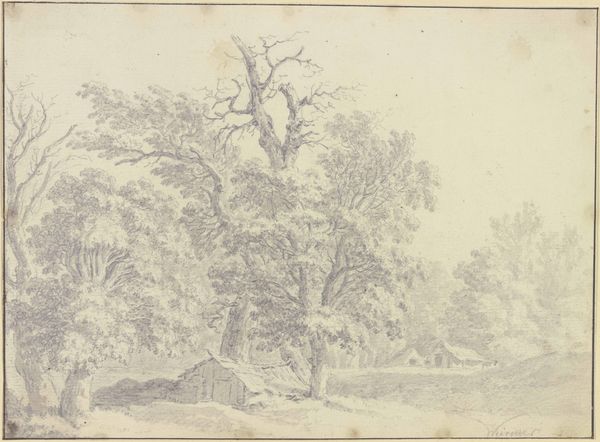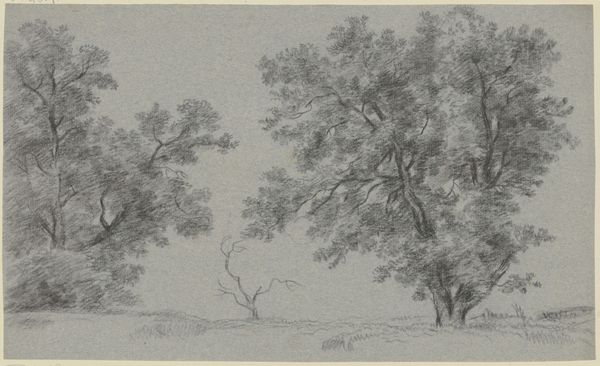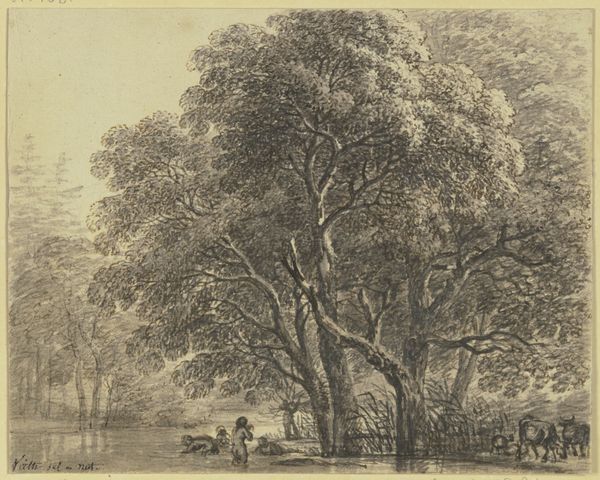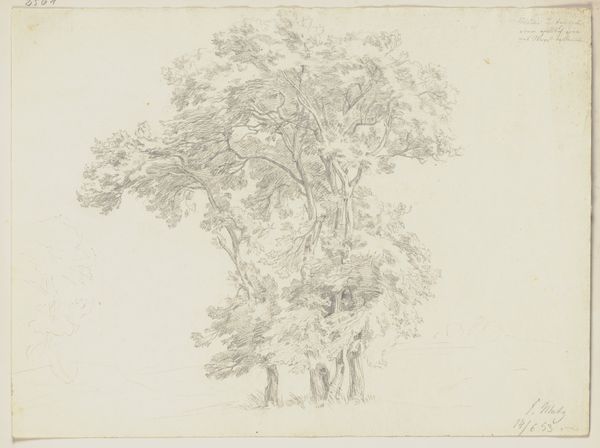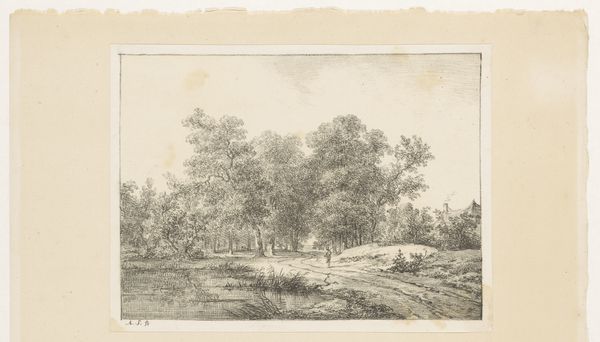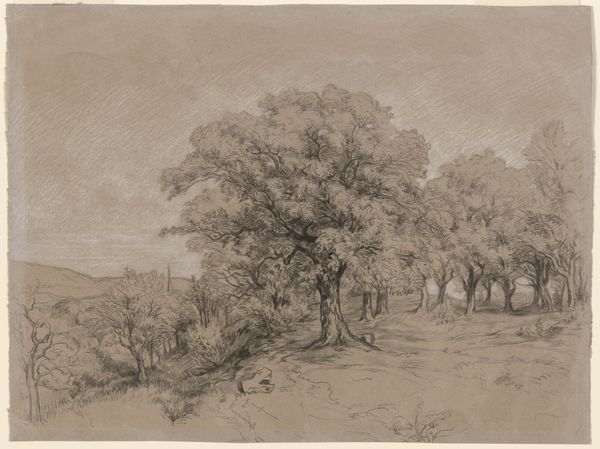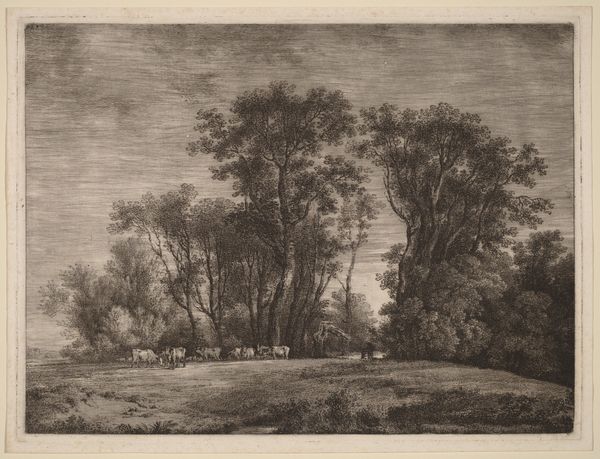
drawing, print, etching, paper, dry-media, pencil
#
drawing
# print
#
etching
#
landscape
#
etching
#
paper
#
dry-media
#
romanticism
#
pencil
Dimensions: 6 5/16 x 10 11/16 in. (16 x 27.1 cm)
Copyright: Public Domain
Curator: Let's turn our attention to "Landscape," a compelling artwork crafted in 1842 by Theodore Rousseau, currently held at the Metropolitan Museum of Art. Rousseau employed etching and pencil to bring this scene to life on paper. Editor: My first thought is that it's deceptively simple. The muted tones and somewhat obscured forms evoke a feeling of intimacy and perhaps a touch of melancholy, as if we are privy to a secret, private grove. The landscape depicted almost fades into itself. Curator: Absolutely, that perceived simplicity belies Rousseau's complex relationship with nature and the Romantic movement’s emphasis on emotion and individualism. Rousseau's artistic agenda here connects to the Romantic's understanding of nature and politics of access and rights within social classes of nineteenth century France. Editor: From a material standpoint, consider the accessibility of drawing materials – pencil and paper. Etchings, while requiring more skill, could also be reproduced. How does the print medium factor into the social circulation of Rousseau's ideas? Curator: Precisely. Prints and drawings allowed for broader dissemination and public access. Landscapes served as a way to explore the intersection of nature, nationhood, and even social reform, considering that idealized and romanticized depictions were not representative of much of rural experience. The unidealized is depicted here by use of earthy media. Editor: I also notice how the dense composition invites a certain level of close looking. One must slow down, consider the varying levels of detail, and engage with the materials in a way that seems tactile even in its two-dimensionality. One really gets a sense of the work having passed through many hands! Curator: True. These details invite further study, causing the viewer to wonder what the space means in relation to that person. The artwork is very complex in its accessibility when these themes are revealed. Editor: It's been fascinating to think through the socio-economic dimension of art production and viewing experiences here, especially with regards to how accessibility may or may not always signify an artwork is readily and equally understood. Curator: Agreed. Thinking of gender, class and race is critical to a more complete experience.
Comments
No comments
Be the first to comment and join the conversation on the ultimate creative platform.

